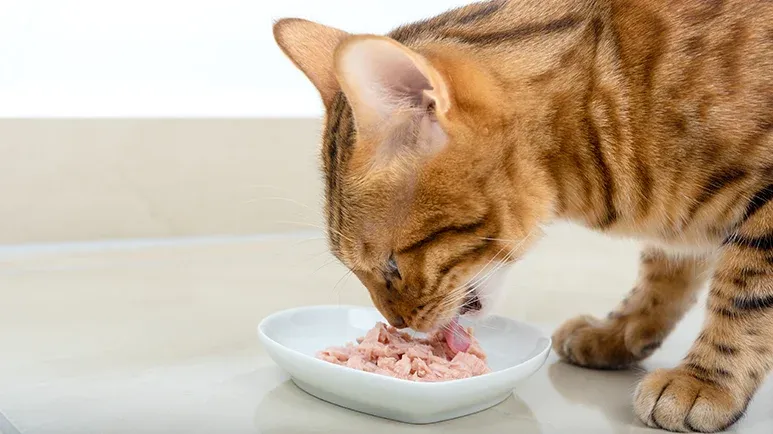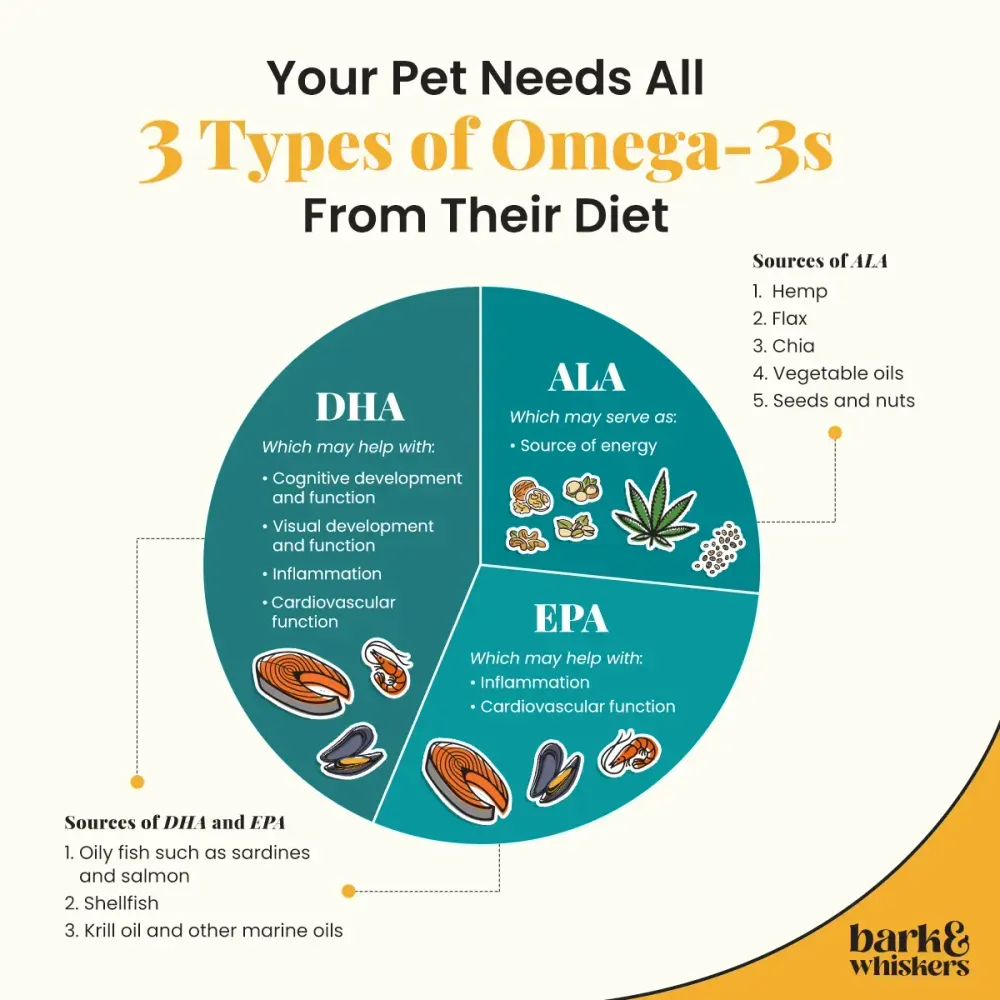Mystery Solved: Why Most Cats Go Crazy Over This Flavor
The feline attraction to this unlikely food has puzzled scientists because today's domestic kitties evolved from desert-dwelling wildcats. Yet, it turns out cats' taste buds have receptors that are tuned to certain molecules found in high concentrations in this food, which I don't even recommend.

STORY AT-A-GLANCE
- Most cats enjoy fish, especially tuna, which has always been a bit of a mystery, since today's domestic kitties evolved from desert dwelling wildcats
- Cats' taste buds have receptors that detect umami — the savory, deep flavor of meat; now U.K. researchers have discovered that feline taste receptors are also uniquely tuned to the molecules histidine (an amino acid) and inosine monophosphate (a nucleotide) found in high concentrations in tuna
- Desert wildcats dine primarily on mice, rats, birds, and reptiles that eat insects, so according to at least one expert, it's conceivable the insects contain amino acids and nucleotides similar to those found in tuna, thereby closing the desert-dwelling-but-tuna-loving loop
- In terms of feeding tuna to cats, while it offers a wealth of nutrients, it's also contaminated with toxic pollutants including flame retardants, pesticides, and polychlorinated biphenyls (PCBs)
- Wild-caught Alaskan salmon or sardines are safer alternatives to tuna, as they offer plenty of omega-3's with a much lower risk of toxins
As all of you with feline family members know, most cats really like fish, especially tuna, which has always been a bit of mystery since our fuzzy little friends actually evolved as desert dwellers. However, the tuna puzzle may have been at least partially solved recently by scientists at the Waltham Petcare Science Institute in the U.K.
Cats' taste buds have receptors that detect umami, which is the savory, deep flavor of various meats. Unsurprisingly, considering felines are obligate carnivores, it's the umami flavor they most often seek out. In a study published in August 2023 in Chemical Senses,1 the Waltham research team discovered that feline taste receptors are also "uniquely tuned to molecules found at high concentrations in tuna, revealing why our feline friends seem to prefer this delicacy over all others."2
Feline Taste Buds Are Adapted to the Flavors in Meat
Umami is one of the five basic tastes that also include sweet, sour, salty, and bitter. Unlike their canine counterparts, kitties lack a key protein necessary to taste sugar, probably because there's no sugar in meat. According to lead study author Scott McGrane, the phrase "If you don't use it, you lose it," likely applies to cats' inability to taste sweet flavors. They also have fewer bitter taste receptors than humans do, which is common in true carnivores.
In humans and many other animals, two genes in taste buds (Tas1r1 and Tas1r3) combine to form a receptor for the umami taste. Earlier research shows that feline taste buds express the Tas1r3 gene,3 but perhaps not the other one in the pair, so the Waltham team decided to dig further.
For the study, they biopsied the tongue of a 6-year-old male cat that had been euthanized for health reasons (unrelated to the study). They performed genetic sequencing on the tissue sample and discovered the cat's taste buds did indeed express both genes.
Then the researchers compared the protein sequences encoded by the two feline genes with those of humans and found a surprising difference: The two critical sites that allow the human taste receptor to bind to the main amino acids that activate umami taste were mutated in cats. This led McGrane and colleagues to wonder if perhaps cats actually can't taste umami. Here's what they did next:
"… [McGrane] and his team engineered cells to produce the cat umami receptor on their surface. They then exposed the cells to a variety of amino acids and nucleotides. The cells did respond to umami — but with a twist. In people, the amino acids bind first and the nucleotides amplify the response. But in cats, the nucleotides activated the receptor, and the amino acids further boosted it … the exact opposite of how it works in people."4
In the final step of the experiment, the researchers gave 25 cats a series of taste trials. The kitties were offered two bowls of water, each with various combinations of amino acids and nucleotides, or just water alone. The cats demonstrated a strong positive response to the bowls containing molecules found in umami-rich foods, suggesting umami is the primary motivator.
The researchers made the point that dogs may be less fussy eaters than cats because they can taste both sweet and umami flavors.
Is It Really Tuna Cats Love, or Compounds Found in Tuna?
McGrane and his team noted that it wasn't just umami flavors the cats desired, but also food containing histidine and inosine monophosphate — two substances found at particularly high levels in tuna.
"It was one of the most preferred combinations," McGrane says. "It really seems to hit that umami sweet spot."
Yasuka Toda, a molecular biologist at Meiji University who studies the evolution of umami taste in mammals and birds, while not involved in the present study, can relate. As a veterinary student, she enticed cats with no appetite to eat by sprinkling dried flakes of bonito into their food. Bonito is a common umami ingredient in Japan and a close relative of tuna.
Bonito flakes are in the pet market as food toppers, but these findings could potentially be used by pet food manufacturers and veterinary pharmaceutical companies to develop products that are more palatable to cats. However, the study results still don't fully answer the question of why felines, a species that evolved in the fish-free deserts of the Middle East 10,000 or so years ago, crave tuna.
Some experts theorize that the taste for tuna may have developed over time, since cats have been depicted eating fish in the art of Ancient Egypt, and by the Middle Ages, were consuming large quantities of fish, including tuna, in Middle Eastern ports.5
An alternative theory is offered by author Dr. Michael W. Fox at UExpress. Dr. Fox is an author and internationally recognized veterinarian and former vice-president of both the Humane Society of the United States and Humane Society International:
"The domestic cat is a descendant of Felis lybica, the African wildcat. Wildcats hunt primarily mice, rats, birds, reptiles and insects. It is likely that the insects in wildcats' diet contain the same amino acids and nucleotides that cats like to eat, as would the insectivorous reptiles and birds that consume these insects before being consumed by the cats.
So tuna likely contains similar nutrients to the ones cats have enjoyed since their early days in the desert."6
Why I Don't Recommend Feeding Tuna to Cats
Fox also raised another very important point:
"… because of mercury and other contaminants, and the fact that many cats are allergic to fish, I do not advise feeding tuna to cats."
I couldn't agree more. While tuna offers nutrients including iron, selenium, B vitamins and zinc, many types of fish are highly contaminated with toxic pollutants including flame retardants, pesticides, and polychlorinated biphenyls (PCBs).7
According to a study published in the journal Environmental Health Perspectives, 90% of tuna from the northeast Atlantic Ocean and over 60% from the Gulf of Mexico have worrying levels of pollutants that could trigger health advisories in certain members of the population, like pregnant and nursing women.8,9
In a study published by the U.S. Geological Survey, significantly high amounts of mercury were found in all of the tuna they tested;10 in yellowfin tuna particularly, the levels are rising by 3.8% per year.11 This is alarming, considering that mercury can affect various areas of human and pet health. In pets, mercury can harm the brain and kidneys.12
The good news is that not all seafood is loaded with mercury. Wild-caught Alaskan salmon is a good alternative to tuna, as it offers plenty of nutrients with fewer risks of heavy metal contamination. You can read more about feeding salmon to pets here.
Another great option is sardines, one of the most concentrated sources of omega-3s available. Due to their short lifespan, they don't live long enough to accumulate toxins. They also contain nutrients like vitamins B12 and D, selenium, calcium and more.
The following is an easy sardine treat recipe you can try. Just remember that healthy treats like this should only make up less than 10% of your pet's daily caloric intake:
Dehydrated Sardine Crisps
Ingredients:
- 1 can sardines packed in water
- Parchment paper
- Food dehydrator
Directions:
- Drain water from sardines.
- Place sardines on parchment-covered dehydrator trays.
- Dehydrate at 155oF for two hours.
- Reduce temp to 140oF for four more hours, or until fish are thoroughly dried.
- Store in the refrigerator for up to a week.
Excellent Sources of Omega-3 Essential Fatty Acids
Omega-3s play a role in your pet's overall health in numerous ways, which is why it's important that your feline family member gets all three types from his or her diet, in the right amounts. These include the short-chain fatty acid alpha-linolenic acid (ALA) from plants, and the two long-chain fatty acids from marine sources: docosahexaenoic acid (DHA) and eicosapentaenoic acid (EPA).

As mentioned earlier, wild-caught salmon, shellfish like mussels, and small oily fish like sardines are good seafood choices, and they can provide your kitty with abundant amounts of EPA and DHA. Krill oil is also one of my favorite sources, as it is well-absorbed and delivers these fatty acids as phospholipids directly into your pet's cells. Krill also provides antioxidants like vitamins A and E, plus astaxanthin and canthaxanthin.
All seafood should be sustainably sourced. Having third party verification for sustainability and safety is important when harvesting anything from the ocean, including krill.
One of the best strategies is to look for seafood that has been certified by the Marine Stewardship Council (MSC). Their logo features the letters MSC and a blue check mark in the shape of a fish. Being MSC-certified means the krill or the seafood you buy came from a responsible fishery that uses sustainable fishing practices to minimize environmental impacts.
Sources and References
- 1 McGrane, S.J. et al. Chemical Senses, Volume 48, August 8, 2023
- 2,4,5 Science, August 25, 2023
- 3 Li, X. et al. PLOS Genetics, July 25, 2005
- 6 UExpress, October 8, 2023
- 7,9 NPR, August 9, 2017
- 8 Environ Health Perspect. 2017 Jun 26;125(6):067014
- 10 US Geological Society, Mercury in Fish, Bed Sediment and Water From Streams Across the U.S., 1998-2005
- 11 Russ George, August 9, 2017
- 12 Veterinary Toxicology (Third Edition), Basic and Clinical Principles 2018, Pages 455-462











